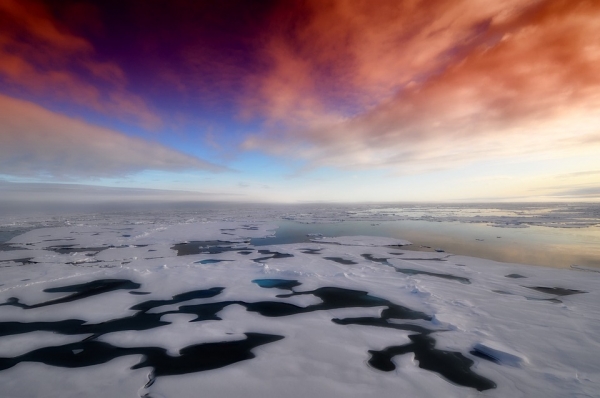A warmer Arctic has been linked to extreme winter weather in the midlatitude regions. But, it is not clear how global warming affects this link. In a new study, researchers show, using weather data and climate models, that while the 'Warm Arctic-Cold Continent' pattern will continue as the climate continues to warm, Arctic warming will become a less reliable predictor of extreme winter weather in the future.
Pictures of melting glaciers and stranded polar bears on shrinking sea ice in the Arctic are perhaps the most striking images that have been used to highlights the effects of global warming. However, they do not convey the full extent of the consequences of warmer Arctic. In recent years, there has been growing recognition of the Arctic's role in driving extreme weather events in other parts of the world. While the Arctic has been warming at a rate twice as fast as the global average, winters in the midlatitude regions have experienced colder and more severe weather events. For instance, the winter of 2022-2023 saw record-breaking cold temperatures and snowfall in Japan, China, and Korea. Similarly, many parts of Eurasia and North America have experienced severe cold snaps, with heavy snowfall and prolonged periods of sub-zero temperatures.
While there are multiple theories for this climate phenomenon, an international team of researchers led by Professor Jin-Ho Yoon from Gwangju Institute of Science and Technology (GIST), Korea set out to examine the relationship between the severe winters in the Northern Hemisphere and the melting sea ice in the Arctic region, a phenomenon referred to as the "Warm Arctic-Cold Continent" (WACC), and how this relationship changed with the warming climate.
Read more at GIST (Gwangju Institute of Science and Technology)
Photo Credit: 12019 via Pixabay


